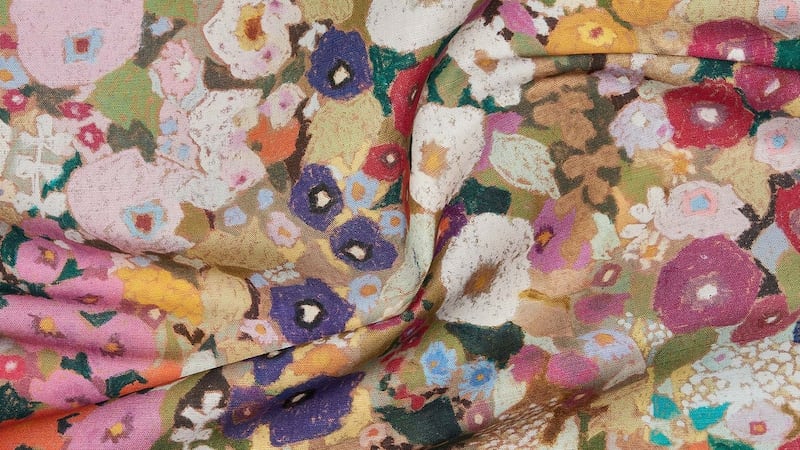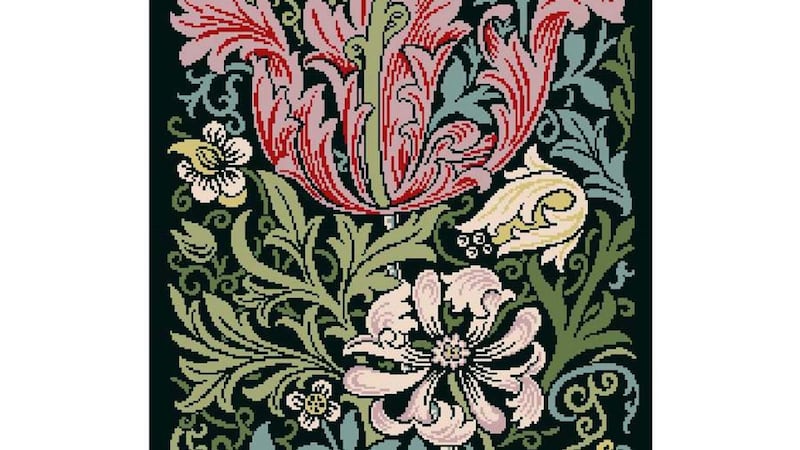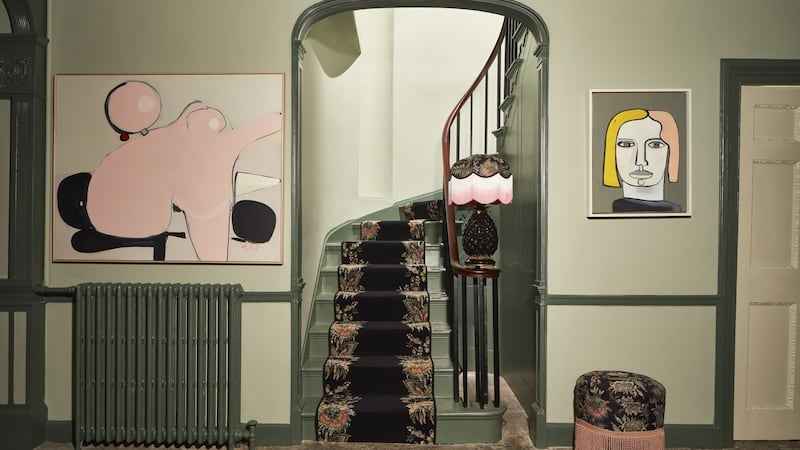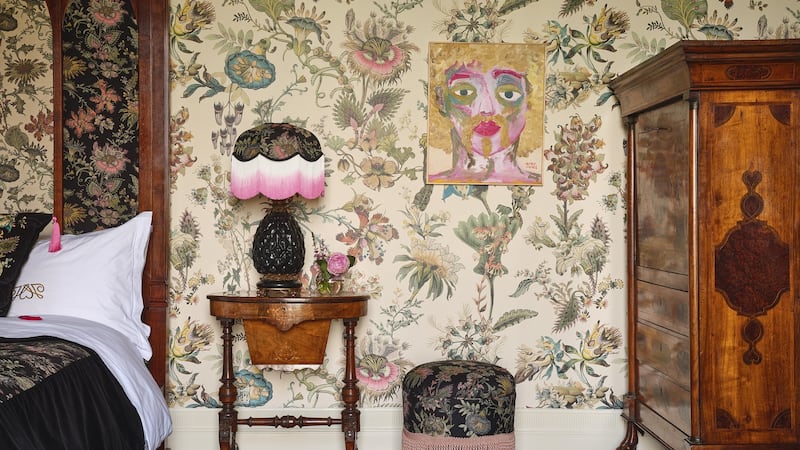“During tough times people want colour. They want their homes to feel like a sanctuary, not like a dentist’s surgery. At a time when uncertainty and anxiety reign, people want a fairytale, so we have really ramped up the imagination.”
When House of Hackney burst onto the interiors scene in 2011, its maximalist aesthetic was the antithesis to the austerity which preceded its launch. Similarly, as the brand celebrates 10 years in business, husband and wife team Javvy M Royle and Dublin-born Frieda Gormley report that 2020 was their most successful year yet as people sought to make sanctuaries of their homes amid the global pandemic.
When we speak on the phone, Gormley is surrounded by silence save for the occasional thrum of a passing motorcycle. It's a far cry from London's Hackney to the Castle of Trematon in Cornwall with its Norman motte-and-bailey fortification, 13th-century gatehouse and Georgian mansion the couple now call home.



Royle and Gormley had just visited the castle, a well-known landmark, on holidays three years ago, when a friend suggested they might be interested in taking on the estate. Feeling it was serendipitous, they went for it, inheriting magnificent gardens but a house that needed to be “stripped back to its bare bones”. It is now an experiential gateway into the world of House of Hackney and one which, restrictions allowing, will open to the public as a pop-up hotel this summer.
“I pinch myself when I wake up in the morning,” says Gormley. “It all looks a bit like a model railway. We have now future-proofed the house and are moving on to the gardens. We are fascinated by the cycle and systems of nature, so we’re currently establishing a forest garden and wormery; we have brought sheep in and bees are next.”
Gormley was born in Ireland and, having moved to Spain as a teen, returned to Dublin to study law at Trinity College. She has credited her grandmother, Margaret (Peg) O'Higgins, who lived on Blackhorse Avenue, Dublin 7, for opening her eyes, aesthetically speaking. The modest three-bedroom property was full of antiques hand-picked by Peg.
In college, Gormley had a part-time job in The Harlequin vintage store, where she was “privileged” to help buy for the shop. From there she went through the buyer trainee programme at Dunnes Stores and on to Topshop in the UK.
“I had a phenomenal experience at Topshop, but over time, the idea of mass production and disposability wasn’t sitting well with me. When myself and Javvy set up House of Hackney, we decided to create something traditional but with a twist. We spent a year driving around the UK finding makers and little factories that could make our products.”
How does living in Cornwall sit with House of Hackney as a brand rooted in London?
“Our head office and flagship is still in Hackney and the area remains a huge inspiration to us. If Hackney is the ‘house’, then perhaps Trematon is the ‘garden’, but Hackney will remain the beating heart of the brand.”


The brand has just launched its new collection – The Fantastical World of Flora Fantasia, including the Flora Fantasia, Compton and Hollyhocks designs. Flora Fantasia is a modern take on rare watercolours of fantasy flowers by 19th-century artist J Buchert. The illustrations have been reinterpreted and now adorn rugs by heritage company Axminster Carpets, as well as fringed lampshades, cushions and wallpapers.
In keeping with the zeitgeist, the brand’s new Hollyhocks design is a cottagecore mash-up of pastoral idyll and punk by US artist Kerry Simmons; while the Compton collection reimagines William Morris’s last interiors redesign at Compton Hall in the British midlands in a vibe that’s more Warhol than Wolverhampton.
If the House of Hackney aesthetic is less than minimal, it might also be said that the prices are too. Cushions in the collection start at about €137, wallpaper starts at €157 per metre, and a stair runner will set the interiors fan back a cool €357 a metre.
But, where else can one purchase a khaki-green carpet emblazoned with a tiger? Or a fringed, glass-topped ottoman inspired by a Persian carpet? House of Hackney products are made from the finest materials by craftspeople who are “best in class”. These designs aren’t crafty, but they involve a lot of craft.
The business recently achieved B Corp™ status, meaning it reaches the highest verified standards of social and environmental performance, transparency and accountability. Wouldn’t it be easier to just make and sell “stuff” instead of sticking your head above the parapet (no pun intended)?
“We want to keep challenging ourselves and how we do business. We want the scrutiny,” insists Gormley. “There are certain challenges [for example with packaging] that we want to find solutions for and we want to be able to say we are here, we are certified as being here, and these are our next steps.”


B Corp™ also encourages, indeed demands, that businesses inspire a “race to the top” in terms of best business practices. In keeping with this, the couple has just launched Garden of Tomorrow, a forum where they can highlight topics and exchange ideas.
“We have an audience who share our views and we feel ready to broach tough subjects,” says Gormley. “We feel that we have a duty to use our platform to amplify these conversations and use our platform in the best possible way.”
Is it, I wonder, the responsibility of consumers or brands to make the industry more sustainable? She says that among a certain cohort of consumers, including Gen Z shoppers, there is now an expectation that brands not only produce great products but do so in a conscious way.
“Ultimately, a lot of businesses need to look at their business models – the continued capitalist growth model cannot continue. It is about balancing people and profit,” says Gormley who is also well aware that buying an expensive item, whether of food, fashion or interiors, comes with privilege.
But how does one run a profitable business if it’s not all about making money?
“House of Hackney has been built on the idea of slow growth. If you saw our earlier figures, you’d be horrified,” laughs Gormley. “But we’re okay with that. There’s a lot of opportunity around the world and people are discovering us all the time. Our products have integrity and they bring joy. We are not peddling the idea of buying a new lamp every week; it’s about dipping into the collection every now and then.”
Ten years on and with a 25-strong team, Gormley says she and Royle have been fortunate to build “a brand with heart”.
“To be able to balance creativity with consciousness and commerciality is very fulfilling. To be part of something which feels very positive and buoyant is great. I think that probably comes across to the consumer too – House of Hackney is a spiritually healthy brand.”
















